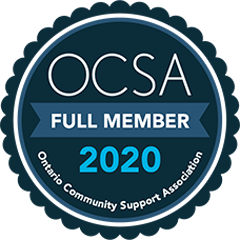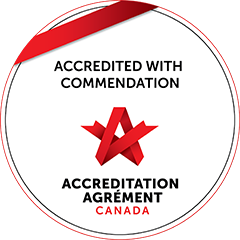When Can I Drive Again?
It is important for your safety and the safety of others that your readiness to go back to driving be assessed by health professionals. Your doctor, plus an occupational therapist (OT) or psychologist, and/or a driver rehab specialist are part of this assessment. You should not make the decision to start driving again on your own.
Enough time needs to have passed after your brain injury before you explore your goal of driving. This is to make sure that your brain has had time to recover.
Readiness to Drive
The following can be changed by your brain injury. Problems in one or more of these areas can affect your ability to drive safely.
Medical fitness
Many medical conditions can put you at greater risk for a car crash e.g. seizures, uncontrolled diabetes
Vision
- Changes to your vision can impact driving. These changes could be low vision, double vision, visual field loss, visual acuity, depth perception (ability to perceive or judge distance) and contrast sensitivity (the ability to see objects that do not stand out from their background).
- Your doctor may send you to an optometrist or ophthalmologist (eye specialist) for more tests and treatment
Thinking and perception
- Be aware of and pay attention to everything around you (in front, behind, beside) at all times, without missing anything or getting confused
- Be fast and accurate with your thinking reaction time e.g. how long it takes to decide what to do
- Judge distances between your car and other objects, such as another vehicle, pedestrians, curbs or other obstacles
- Accurately understand what you see around you to identify potential risks, read social signs from other motorists, and find landmarks
- Anticipate the action of other drivers and make the right decisions on how to react
- Remember where you are going and what you just saw
- Have enough energy to drive safely without getting overly tired. When you get tired your brain is not able to handle all the information coming at it, so your response can be slowed or absent.
- Be aware of your limits and know that you may be unsafe to drive
Physical ability
- You need to be fast and accurate with your physical reactions when driving. This includes the ability to brake in an emergency and evasive steering.
- If you have trouble with moving, strength and coordinating your arms, legs and head you may need special equipment to drive safely. There is special equipment (adaptive driving aids) for your car so you can safely use the hand and foot controls, steering wheel and mirrors.
Behaviour, emotional control and good driving habits
- keep calm when you are driving with no signs of anger or road rage
- Show safe driving habits like:
- following the rules of the road
- not drinking alcohol or taking drugs
- not speaking on a cell phone or text messaging when driving
Process for Drivers with Medical Conditions
Includes persons with an acquired brain injury
Deciding whether you can drive again is a complex process that involves many people and agencies. The process can be long and frustrating. Everyone is unique so there may be some differences in your path back to driving.
Fitness to drive safely
- Problems in the "readiness to drive" factors may be noticed by your doctor, another member of your healthcare team, your family or yourself
- Any problems are a reason for concern about your ability to drive safely. By law, your doctor must report the concern to the Ministry of Transportation
- Even if there are no concerns about your to drive safely, you should still get your doctors approval before driving
Ontario Ministry of Transportation determines the next step
- The Ontario Ministry of Transportation is the provincial government agency, responsible for ensuring road safety and regulating who can legally drive
- For further information regarding how the Ontario Ministry of Transportation determines licenses status please see: http://www.mto.gov.on.ca/english/dandv/driver/medical-review/physicians.shtml
- The Ontario Ministry of Transportation may require of you in order to determine whether you are safe to drive again, the following:
1. Medical Review Process
For further information regarding the medical review process go to; http://www.mto.gov.on.ca/english/dandv/driver/medical-review/medical.shtml
2. Driving Evaluations
Individuals who are reported as being medically unfit to drive as a result of a neurological condition, mental illness or physical disability are sometimes required to provide confirmation that they are fit to drive by way of a formal driving evaluation. Driving evaluations may also be requested when an individual is suffering from various age related concerns or multiple medical conditions.
A comprehensive driving evaluation includes a full medical assessment in addition to an on-road evaluation. A driving evaluation is conducted by an Occupational Therapist and a qualified driving instructor. If you are required to undergo a driving evaluation the ministry will send you a list of approved centres along with your letter. These centres are located in hospitals, rehabilitations centres or private clinics. They are independently operated and are not a branch of the Ministry of Transportation.
If, during the course of the evaluation, it is determined that remedial lessons are required prior to returning to independent driving, a report will be sent to the ministry and a temporary licence will be issued (for the purpose of lessons only) provided there are no other outstanding suspensions on file.
Who is responsible for the cost of the driving evaluation?
The ministry is not responsible for the driving evaluation fees. The cost of the evaluation is set by the assessment centre and is not covered by OHIP. The cost generally ranges from $500 - $800, but in some cases may be more. In some cases, insurance companies may cover the costs of the evaluation (if the medical condition/injury is the result of a motor vehicle collision).
How long does the whole process take?
The length of time varies for each person
Articles For Families
Alcohol & Substance Abuse
Information about the effects of alcohol and drug use on the brain and getting help and support.
Concussion
Describes common concussion symptoms, problems and how to get better.
Keep your Brain Healthy
It's all about preventing an injury, living a healthy life and finding ways to take care of your body, mind and spirit.
Sexual Health & Intimacy
Common questions from survivors and/or partners and families regarding sexual health & intimacy.
Strategies to Assist Learning
This article provides strategies, ideas, and tips that may help you continue to learn.
When Can I Drive Again
Describes what has to be considered to determine readiness to drive after a brain injury.
GETTING BACK TO WORK
Describes what has to be considered to determine readiness to return to work after a brain injury.
Brochure a l'intention des personnes atteinte
Les préoccupations de la Société de l'assurance automobile du Québec en matière de réadaptation existent depuis sa création en 1978. Consciente des difficultés que provoquent certains traumatismes graves sur le plan humain, la Société publie la présente brochure afin de venir en aide aux personnes qui sont aux prises avec les problèmes qu'entraîne un traumatisme cranio-cérébral.





